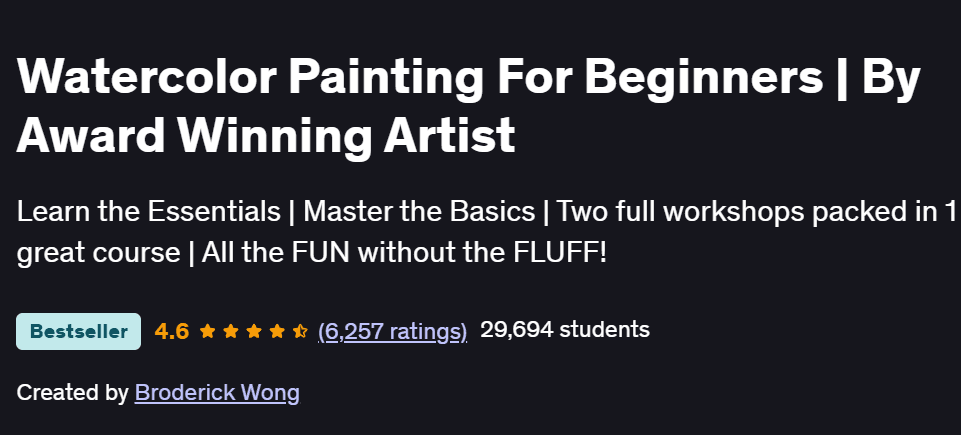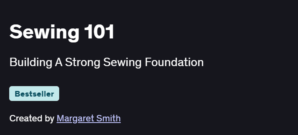What you will learn in Watercolor Painting For Beginners | By Award Winning Artist Course
- Understand the basics of watercolor painting, including tools, materials, and techniques.
- Learn how to mix colors, create gradients, and use washes to achieve beautiful effects.
- Study how to paint various subjects such as landscapes, flowers, and still life.
- Explore essential techniques like wet-on-wet, wet-on-dry, and layering.
- Gain tips for overcoming common painting challenges and improving your skills.
Program Overview
Introduction to Watercolors
⏳ 2-4 weeks
- Learn the fundamentals of watercolor painting, including the types of brushes and paper.
- Study how to mix watercolor paints and create different color combinations.
- Understand the basic watercolor techniques like washes and blending.
Basic Techniques & Tools
⏳ 4-6 weeks
Learn the techniques of wet-on-wet and wet-on-dry painting, and how to control water flow.
Study how to use different types of brushes for detailed strokes and broad washes.
Explore color theory and how to create gradients and textures with watercolors.
Painting Landscapes & Nature
⏳ 4-6 weeks
Learn how to paint natural elements like trees, skies, and bodies of water.
Study techniques for creating depth, shadows, and light effects in nature scenes.
Understand how to layer washes and add detail to landscapes for a realistic finish.
Still Life & Flower Painting
⏳ 4-6 weeks
Study how to paint still life objects such as fruits, vases, and simple household items.
Learn how to capture the delicate details and textures of flowers with watercolors.
Understand how to create shadow, light, and depth in still life paintings.
Advanced Watercolor Techniques
⏳ 6-8 weeks
- Learn advanced techniques like glazing, lifting, and dry brushing for more intricate designs.
- Explore how to incorporate textures, splashes, and other creative effects into your paintings.
- Study how to refine your painting style and improve your overall technique.
Final Project: Create Your Own Watercolor Artwork
⏳ 6-8 weeks
- Apply everything you’ve learned to create a final watercolor painting project.
- Experiment with different techniques and subjects to develop your personal style.
- Receive feedback on your work to enhance your skills and build confidence.
Get certificate
Job Outlook
- Watercolor painting skills are sought after in various fields like fine art, illustration, greeting card design, and digital media.
- Artists can earn from $40K to $60K annually, with experienced watercolor artists, illustrators, and freelancers earning more, especially when selling artwork online or through galleries.
- Many artists also create digital versions of their watercolor work for use in merchandise, prints, or digital content.
Specification: Watercolor Painting For Beginners | By Award Winning Artist
|
FAQs
- No art background is necessary; the course assumes you’re starting from scratch.
- Lessons begin with the basics of brushes, papers, and paints before moving to techniques.
- Even if you’ve never drawn or painted, you’ll build confidence gradually.
- The structured curriculum ensures steady progress without overwhelming you.
- Essential items include watercolor paints (basic palette), brushes, watercolor paper, a water container, and paper towels.
- The instructor explains different brush shapes and paper textures, so you can choose wisely.
- You don’t need expensive professional supplies at the start—affordable student-grade sets are enough.
- As you advance, you may explore specialized brushes, masking tape, and additional color sets.
- Practice is most effective in short, consistent sessions rather than rare long ones.
- Beginners should aim for 20–30 minutes daily or 2–3 focused sessions weekly.
- More practice accelerates your growth in brush control, blending, and color mixing.
- Regular sketching with quick washes helps you improve faster than occasional detailed paintings.
- Yes, watercolor painting is valuable in multiple creative fields.
- Skills can be applied in fine art, children’s book illustration, greeting card design, and digital media.
- Artists sell original works, prints, or even digital scans of paintings on platforms like Etsy.
- With practice, you can create a portfolio that supports freelance opportunities.
- Unlike acrylics or oils, watercolor relies on transparency and fluid layering.
- Water control is key—it creates soft gradients, textures, and blending effects.
- Mistakes are harder to cover compared to opaque paints, but they can be turned into creative textures.
- Watercolor is more portable and requires fewer supplies, making it beginner-friendly and accessible.





